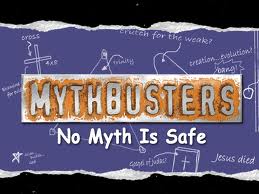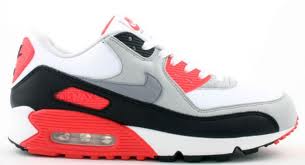Fix Your Run's MythBusters Edition: Feet and Footwear
Aside from slightly wide feet, I am relatively lucky to not suffer from major foot issues. However, I know people who do and I feel for them because often it prevents them from enjoying their favorite activities.
So the problem is that I like to wear shoes that look cool. I admit it! Can you relate? This often means choosing a shoe that's too narrow. But forget about running shoes for a second. Think of ALL the shoes you own. How many of them feel like a million bucks? Like they were custom designed for your feet? Probably not many.
Would you wear an ill-fitting helmet to ride your bike? How about a belt that was 2 notches too tight? Is there a difference between those examples and your shoes?
My goal with this post is to bring an awareness to your feet. If you're always wearing shoes that are too tight (see those red spots on the outer edge of your feet?) you can be sure you are causing problems. You might not feel pain today, but one day you will. So it's “pay now or pay later”.
A philosophy that seems to be entrenched in our society is "our feet are inherently problematic (they're too flat, they pronate too much, etc), and the goal of the foot doctor is to correct these problems with technology."
Myth #1 The foot is inherently misshaped. The way to correct foot problems is by utilizing orthotics or undergoing surgeries.
Fact: Look at the foot of a young child. You will notice that the toes are spaced apart. This foot is naturally designed for optimal balance and gait. These spaced toes, along with the ball of the foot and the heel, provide an optimal base of support for the arch. If the foot maintains this shape, optimal stride is preserved through old age. This is what is seen in societies that go barefoot or wear predominantly flip-flops. In industrialized societies however, people spend a life time wearing rigid shoes, which inevitably leads to a change in foot shape. This is what leads to foot, ankle, knee, and other muscle and joint problems. So the foot is NOT naturally misshaped. In most cases, it starts out just right. The way to address these problems then, is not through use of orthotics or surgeries, but by allowing the foot to return to its natural form, with level forefoot and heel, and with strong, spread toes.
the ball of the foot and the heel, provide an optimal base of support for the arch. If the foot maintains this shape, optimal stride is preserved through old age. This is what is seen in societies that go barefoot or wear predominantly flip-flops. In industrialized societies however, people spend a life time wearing rigid shoes, which inevitably leads to a change in foot shape. This is what leads to foot, ankle, knee, and other muscle and joint problems. So the foot is NOT naturally misshaped. In most cases, it starts out just right. The way to address these problems then, is not through use of orthotics or surgeries, but by allowing the foot to return to its natural form, with level forefoot and heel, and with strong, spread toes.
Myth #2 Athletic shoes are good for feet, because they are flat, they absorb impact, and they support the heel and arch.
Fact: Many people know that high heels are more about fashion than being orthopedically-sound for walking. But what is wrong with athletic shoes? Even athletic shoes elevate the heel, extend the toes, and pinch the toes together. Instead of enhancing performance, this actually compromises the natural gait, leading to chronically tight extensor muscles and toes that structurally change so that they are crunched toward the midline. The foot functions best as a barefoot, that is, when the heel and forefoot are completely level, and the toes are allowed to flex, extend, and spread.
Myth #3 Foot problems and musculoskeletal problems (such as osteoarthritis) are just a natural part of the human aging process.
Fact: It is often heard “I can’t run/walk/stand any more. It’s because I’m getting old.” Foot and musculoskeletal problems are astoundingly common on our modern society. But in fact, they are NOT a natural part of the aging process. Rigid footwear, for reasons explained above, plays a much bigger role in physical degeneration than most people realize. And it is a much bigger player than the aging process. In societies that do not use this rigid footwear, people do not suffer with arthritis, foot problems, and other musculoskeletal problems, even well into old age.
Myth #4 Athletic shoes, especially the expensive ones, are designed by physicists or engineers and are designed to optimize movement while maximizing comfort and foot health.
Fact: If only this were true. But the reality, the shoe market is driven by what “looks good” on the shelf and will therefore sell. This is as true of athletic shoes as it is of
fashion shoes. While comfort is considered, foot health is of bottom priority. Indeed, even when shoe designers are presented with findings that flat, wide shoes are optimal for foot function and health, they do not utilize this information, because such a style is not congruous with the fashionable look. Additionally, considerably more money can be charged for a shoe that boasts “arch support” or “motion control” than for a simple flat shoe. So ultimately, the very shoes that are supposed to enhance performance actually hinder it by altering natural foot shape and gait.
Myth #5 My foot is inherently flat. Or, I naturally have high arches. This is a problem that has to be managed with orthotics or other arch support.
Fact: Contrary to popular belief, in most cases, the height of the arch is not the issue. People can have optimal stride with either a high or a low arch. What is important is the base of support. This support is naturally “built in”, with the heel, forefoot, and spaced toes. If this natural foot is able to walk without the confinement of narrow, rigid shoes, then external support devices, such as “arch support” insoles or orthotics are NOT required. What a brilliant design!
Stay tuned for a post on which shoes I recommend for strength training or simply walking around... and you can bet they'll look good, too!
Special thanks to Northwest Foot & Ankle (Portland, OR) for dispelling the preceding myths and providing much of the content in this post. To me it makes logical sense that the foot design has never been an issue; rather our mis-use of it has caused most of our common problems. They make a product called Correct Toes that helps position the foot in the optimal way that was intended by nature. The key to their product is that it is a non-invasive method that treats the underlying cause of dysfunction and thereby provides a long term solution.
PS: About a year ago I actually bought a pair of Correct Toes, love how they feel and relish the verbal abuse from my wife when I wear them barefoot around the house. In my mind, they keep me aware of my feet and ensure I am treating them with respect.




